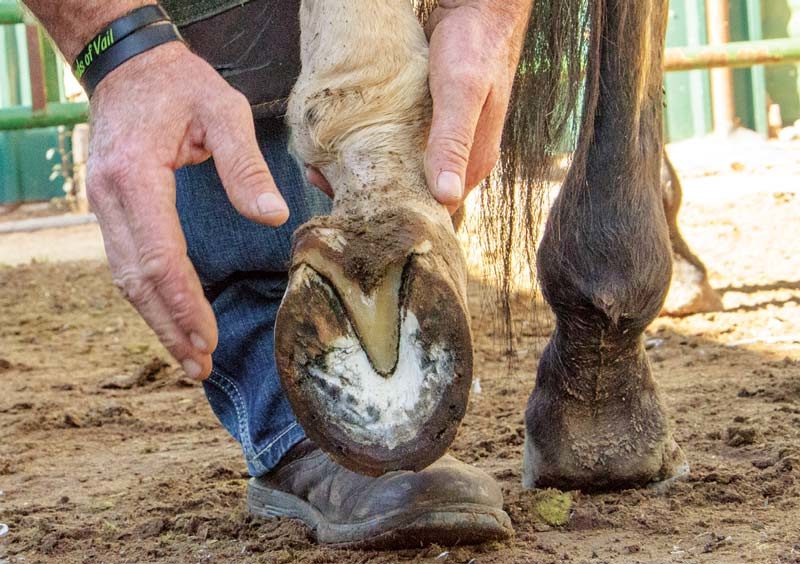American Farriers Journal
American Farriers Journal is the “hands-on” magazine for professional farriers, equine veterinarians and horse care product and service buyers.

Holding the leg in a comfortable position and setting it down gently conveys a sense of trust and safety to horses that are scared or nervous.
Sometimes the farrier is confronted with a new horse that is averse to being handled, and it is important to be able to tell whether the horse is evasive because it is afraid and nervous or independent and spoiled.
Jennifer Horn, a farrier in Sault Ste. Marie, Mich., says that whenever she has a new client or a client with a new horse, she asks about the experiences the client has had with that horse.
“The words clients use in describing the horse’s behavior and their experiences with the horse can give clues, and most of the time people are pretty honest about this,” she says. “You need to carefully listen to them and pick up on key words regarding the horse’s behavior, how it gets along with other horses in the herd, whether it tends to be scared and skittish, etc.”
Even if the horse doesn’t seem scared or timid, Horn’s approach to new horses is to come toward them quietly, in a subtle way.
“I offer a hand to let them smell me on their own terms, and I touch them,” she says. “A lot…